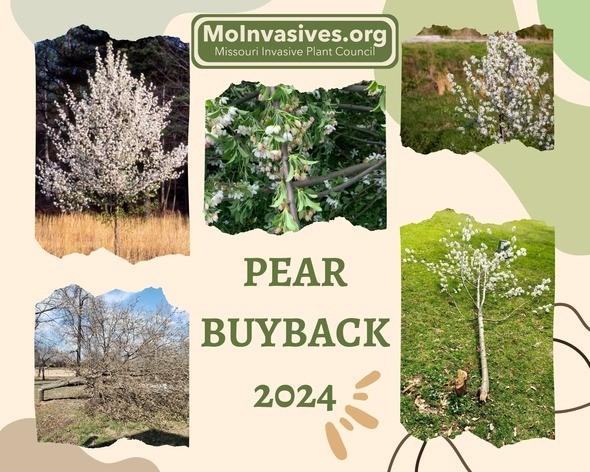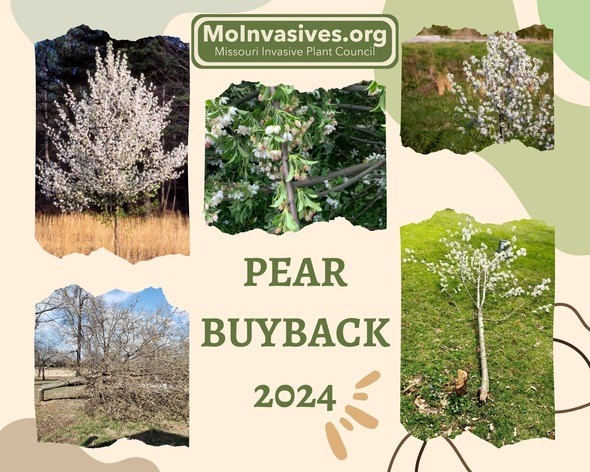
Xplor reconnects kids to nature and helps them find adventure in their own backyard. Free to residents of Missouri.


































Stay in Touch with MDC news, newsletters, events, and manage your subscription

Xplor reconnects kids to nature and helps them find adventure in their own backyard. Free to residents of Missouri.

A monthly publication about conservation in Missouri. Started in 1938, the printed magazine is free to residents of Missouri.


CAPE GIRARDEAU, Mo. — The Missouri Department of Conservation (MDC), Missouri Invasive Plant Task Force (MoIP), the Missouri Community Forestry Council, and Forest ReLeaf of Missouri have teamed up to offer you a new native tree for cutting down your invasive Callery pear tree during a special “buyback” event from 3 to 6 p.m. on April 23 in the Southeast Region.
Participants will receive potted replacement trees, donated by Forest ReLeaf and Forrest Keeling Nursery, in 3-gallon containers that stand between 4- and 5-feet tall.
Participating pick-up locations within the Southeast Region include:
Native to Asia, Callery pear trees (Pyrus calleryana) – also known as Bradford pears – include 26 cultivars which present significant ecological concerns in Missouri. Some of the most common cultivars offered commercially include Aristocrat, Autumn Blaze, Capital, Cleveland Select, Chanticleer, Red-spire, and Whitehouse.
“Callery pears have been an ornamental pear tree species many people have enjoyed for years,” said MDC Community Forester Jennifer Behnken. “However, besides the fact that these trees often break apart in storms, and that they have foul-smelling flowers, it turns out these trees are spreading throughout fields and forests, causing problems in urban and natural areas.”
Participants must register by April 15 online at https://moinvasives.org/2024/01/12/callery-pear-buyback-2024/. Click on the desired location to start the registration process, upload at least one photo of each Callery pear tree cut down, and select one native tree species in return.
One free native tree will be provided to each registered participant.
“We are excited to work with our partners to provide great, native trees to those who are ready to remove Callery pear trees,” added Behnken. “Breaking this cycle begins with choosing native alternatives for future plantings and controlling existing invasive populations.”
For more information about this event, including a full list of replacement-tree species offered, visit https://moinvasives.org/2024/01/12/callery-pear-buyback-2024/.